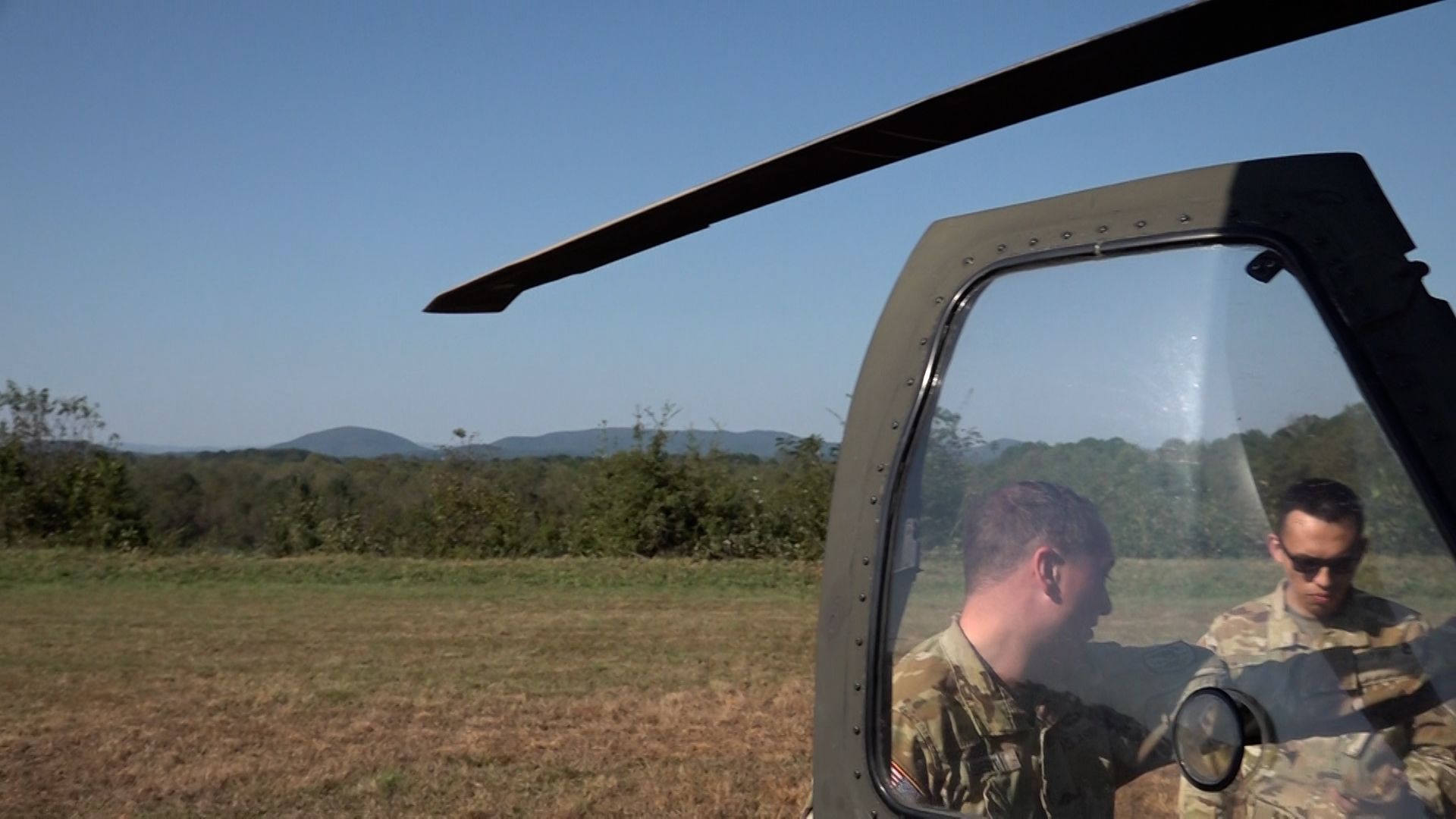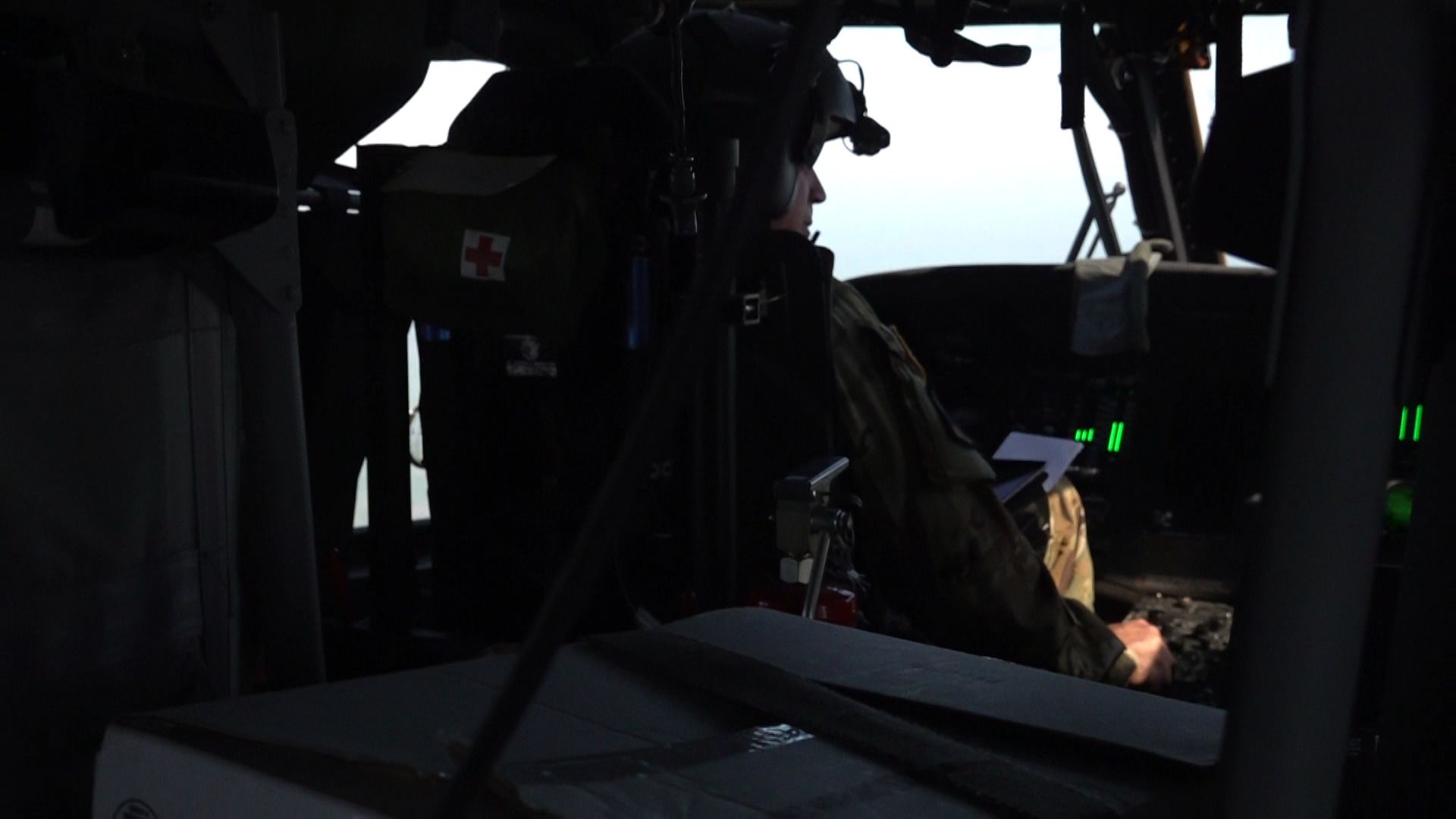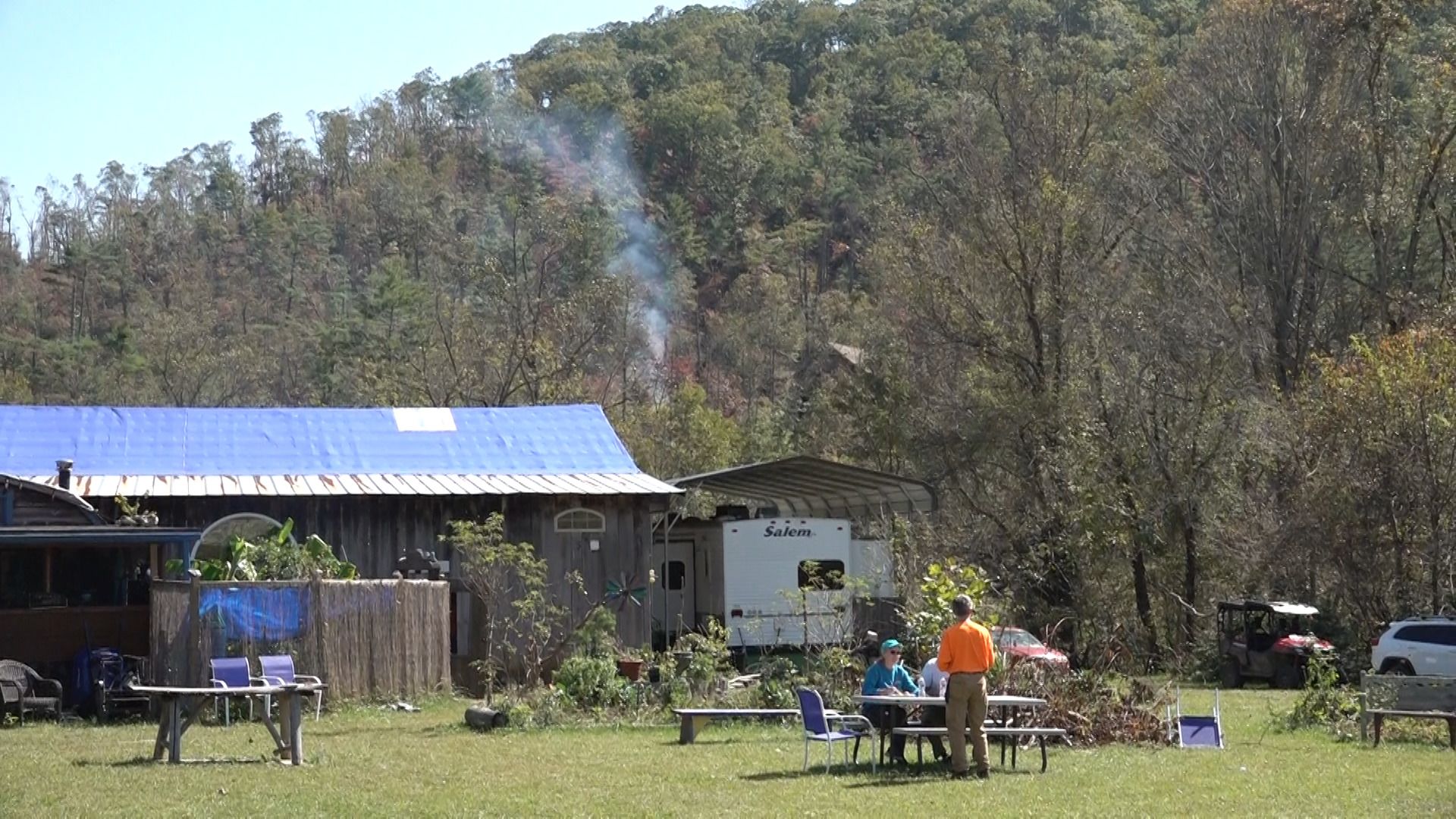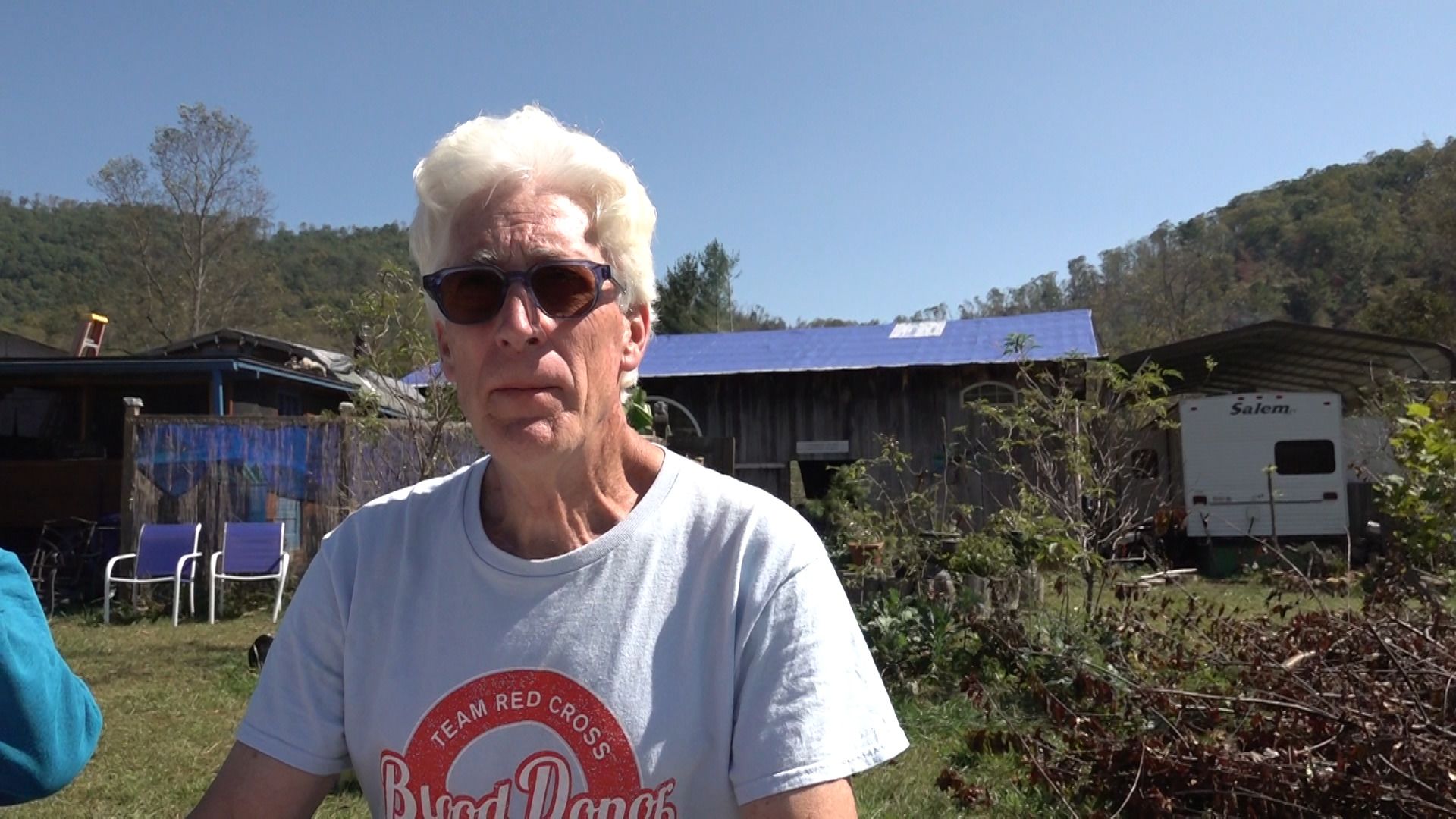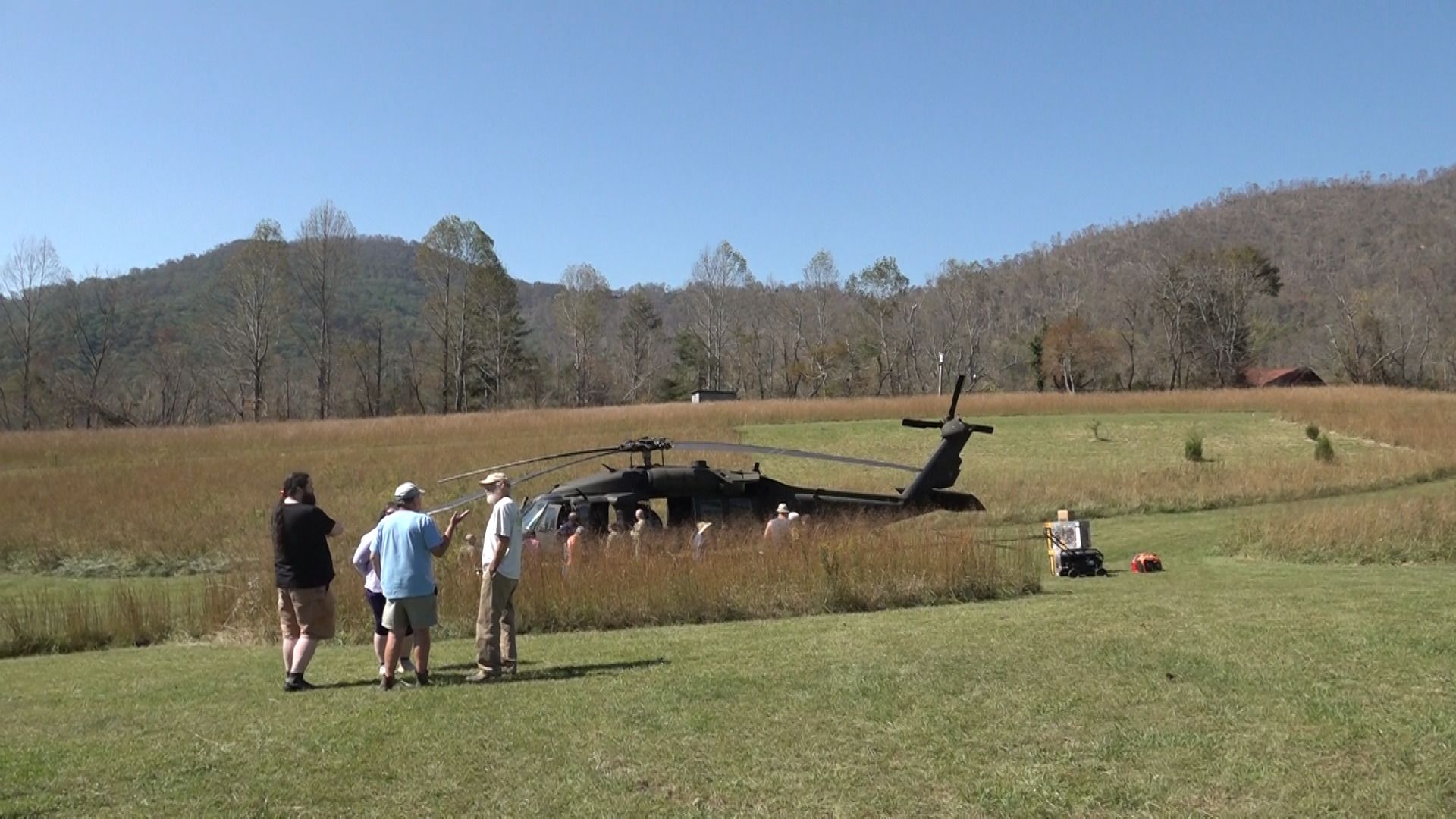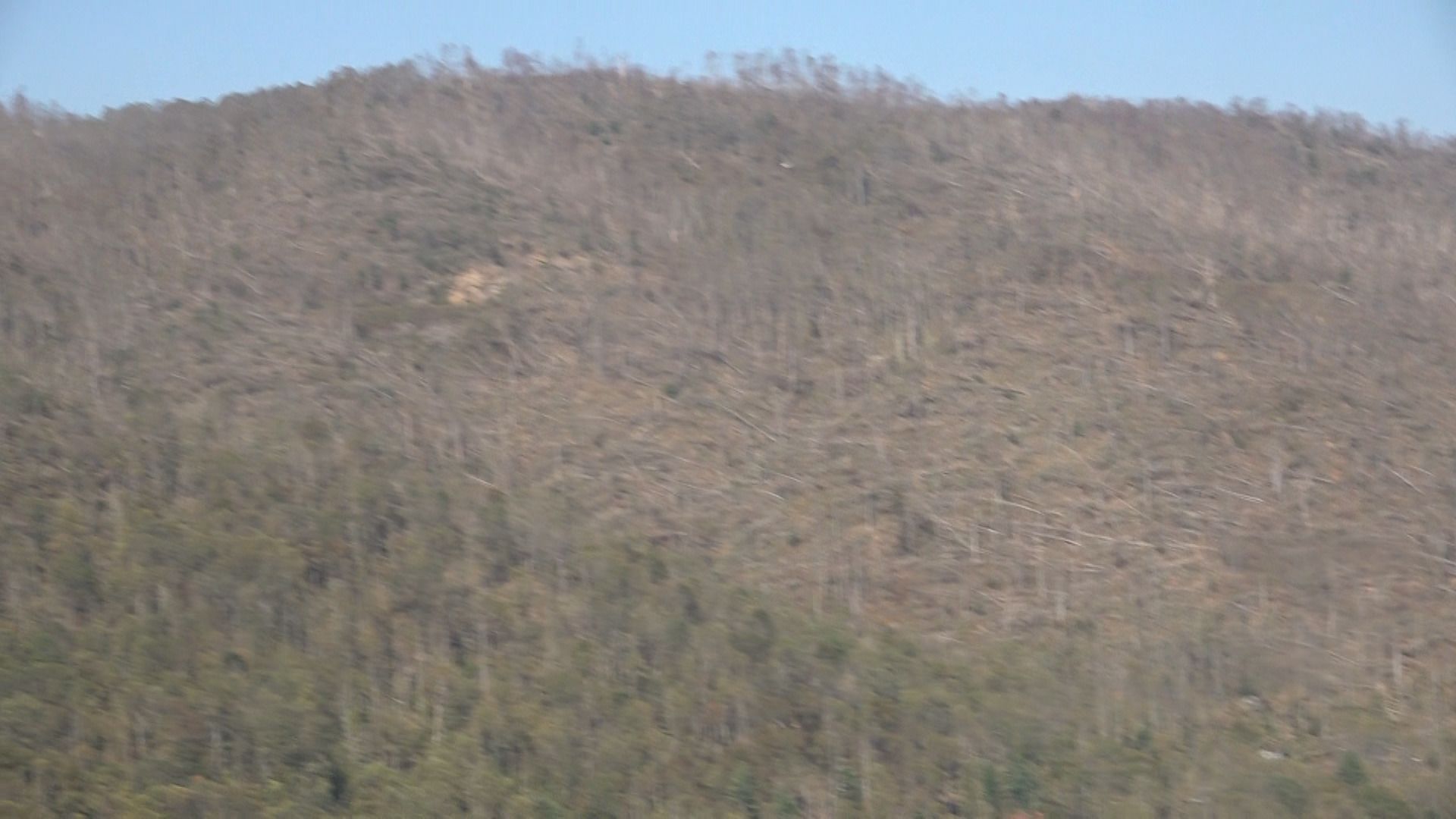Hurricane Helene relief through the lens of a Black Hawk mission
National Guard works to provide rural communities with supplies
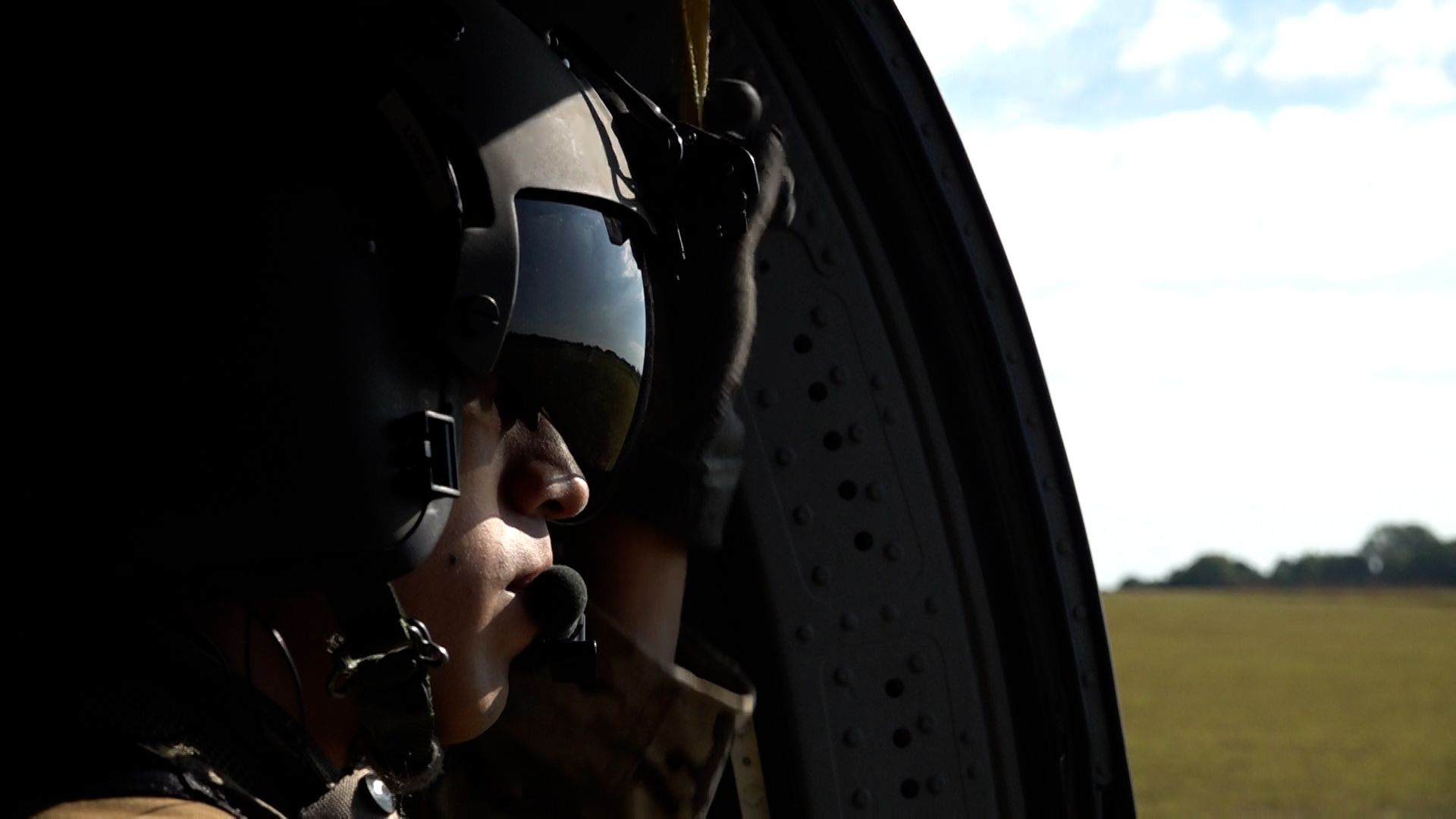
An Elon News Network reporter embedded with the North Carolina National Guard during an aerial supply mission in the aftermath of Hurricane Helene.
A Black Hawk helicopter hovers over the Bull Creek Valley, an unincorporated community east of Asheville. Wind-blasted swathes of trees, uprooted and gray, spread on the horizon. The commune’s adults form in the field below and emerge from the picnic tables and chimney smoke. The power and water are gone.
The National Guard has been working to sustain the recovery of western North Carolina’s fragmented pockets. After Hurricane Helene hit Sept. 27, much of the infrastructure throughout North Carolina was severed. At the storm's peak, there were hundreds of closures. Sections of I-40 still face significant damage.
The Black Hawk helicopter is an assault vehicle in times of war. It drops off troops in areas inaccessible to ground transport. Now, instead of dropping behind enemy lines, it has finished dropping supplies in America’s interior.
According to Black Hawk Crew Chief Dylan Ebert, the guard’s priority is to focus on the long-term livable conditions by providing generators and blankets.
“There are entire areas that are cut off, and sometimes, we are the only asset that is available,” Ebert said.
Increased temperatures in the Atlantic contributed to abnormally high amounts of rainfall in the Appalachian Mountains. The region was crippled by “flash flooding, landslides, rock fall, road washouts and bridge collapses,” according to the Federal Highway Administration.
According to the North Carolina Department of Health and Human Services, 101 people lost their lives due to Hurricane Helene — while 10 remain unaccounted for. It was the worst flooding to ever strike the area in its history.
Duke Energy reported around 700,000 outages in western North Carolina as the storm struck the Carolinas on Sept. 27. As of Oct. 31, outages dropped to 750. Water in some areas of Buncombe County is barely running and non-potable, according to WXII. Many areas like Bull Creek are difficult to restore power to because of debris and limited access.
The flash of the sun opens the sky for flight in early October. The crew prepares to leave the Army Aviation Flight Facility in Salisbury on Oct. 8. Men in fatigues stride across the landing zone and talk over the noise of the blades, clutching energy drinks with their free hands.
One of the specialists holds a tablet and briefs safety information for additional flyers before takeoff. “We are not expecting an emergency landing, however in the event of one...” Most of it was decipherable over neighboring helicopter blades.
The 30 miles from Salisbury to Hickory was a flight over unharmed, wide America. The waters of the rivers were still flushed with mud from the weeks before. The helicopter followed them out West.
Hickory is at the foot of the Appalachian Mountain Range. The Blue Ridge Mountains appear faintly in the west. While waiting for the generators in Hickory, Specialist Leonardo Lopez leaned on the Black Hawk. Lopez is a native of Winston-Salem.
“Disaster could happen to anyone,” Lopez said.
Lopez said he learned how “A lot of these people are neighbors helping themselves.”
Crew Chief Dylan Ebert and Specialist Leonardo Lopez stand Oct. 8 outside the helicopter waiting on supplies.
Crew Chief Dylan Ebert and Specialist Leonardo Lopez stand Oct. 8 outside the helicopter waiting on supplies.
The interior of the Black Hawk on Oct. 8 as the pilot follows the coordinates on a note-card given by command.
The interior of the Black Hawk on Oct. 8 as the pilot follows the coordinates on a note-card given by command.

The farm Peace Rock, where the Black Hawk landed in Bull Creek Valley on Oct. 8.
The farm Peace Rock, where the Black Hawk landed in Bull Creek Valley on Oct. 8.
Randy Lehman sits at a picnic table Oct. 8. At the height of the storm at the end of September, he led chainsaw rescue parties to clear debris from the surrounding area.
Randy Lehman sits at a picnic table Oct. 8. At the height of the storm at the end of September, he led chainsaw rescue parties to clear debris from the surrounding area.
Bull Creek area residents surround the Black Hawk and talk to the crew on Oct. 8.
Bull Creek area residents surround the Black Hawk and talk to the crew on Oct. 8.
The windswept devastation on the mountains surrounding Bull Creek Valley, observed from the air on Oct. 8.
The windswept devastation on the mountains surrounding Bull Creek Valley, observed from the air on Oct. 8.
The Drop-off
The Bull Creek Community sits in a valley of the Swannanoa mountains. Less than 1,000 people live in its valley. Each of the houses faced different measures of the elements.
One house is charred black, a couple have tarps slung over their roof.
The withered forest left few points of entry. In jagged flight, the Black Hawk circles above the wilderness and finds a patch to land in. Residents peer atop the small hills of the property, watching the wild grass billow.
Near Bull Creek, all power lines were severed. The only road into town, the Bull Creek Bridge, was destroyed. The day of the mission, most supplies were provided from air.
Helene struck two weeks prior to the mission. Bull Creek was still reeling from damage and required long-term aid. Erik Bendix, a resident of 42 years, said he considered himself lucky.
“We just had wind damage, no flooding here,” Bendix said. “We didn’t end up like Asheville or some of the other places.”
The trees fell “like dominoes” at the storm's peak, according to Bendix. The community was able to band together and form medical teams days after the storm — going as far as to prevent a death of one of their own.
Randy Lehman, 62, led the chainsaw-wielding rescue parties in the aftermath of the storm. He sat at a picnic table, watching the helicopter from afar.
“We were fortunate not to lose anyone,” Lehman said, “but we got pretty close.”
No one in the Bull Creek Valley lost their life. The Bull Creek Community is in Buncombe county, where 42 of the 101 deaths in the state happened. Despite the flying debris, generator fires and tornadoes, no one in the Bull Creek Valley lost their life.
One of the residents suffered a broken neck because of flying debris. The community improvised and bundled him with blankets and placed him onto a borrowed sled. While a nearby generator fire burned someone’s home, they delivered him by ATV to the nearest medical attention.
At the worst point of the storm, Bull Creek area residents mentioned cyclones tearing through trees, coming from the darkened sky. The trails of destruction were still visible.
The community has food and water, Lehman said, but needs consistent electricity to begin modern life. Looking past the tarped roofs, Lehman shared how he thought of Helene as a sign of how human life needs to change.
“Mother nature will eventually start affecting us,” Lehman said. “I don’t know if I would classify it as man vs. nature, but North Carolina has to stop with the now outdated way of developing on the banks of rivers.”
Leaving Buncombe County
Before it was time to leave, the crew asked the residents if they needed anything else. A bearded man spoke up.
“Well, we’ve got some kids in the barn. Would you mind if we brought them out and showed them the helicopter?”
The Bull Creek community will use the generators to power heating as temperatures continue to drop through the fall season. The chopper flew back over the same rust-colored water. Within minutes the crew returned to the untouched Piedmont.
Stopping for a refuel, Lopez waited away from the helicopter where it was quieter. Lopez is a former combat veteran and has logged 700 flight hours since Helene struck. He flew missions during the peak of devastation.
Speaking on Bull Creek Valley, Lopez crossed his arms and looked to the ground.
“That was definitely one of the better ones,” He said.
He said nothing else and walked back to the chopper, back into the machine in defiance of the wind.
The region has been scarred with $3 to 5 billion of loss, according to one real estate estimate. It is estimated it may take years for the region to fully recover.


